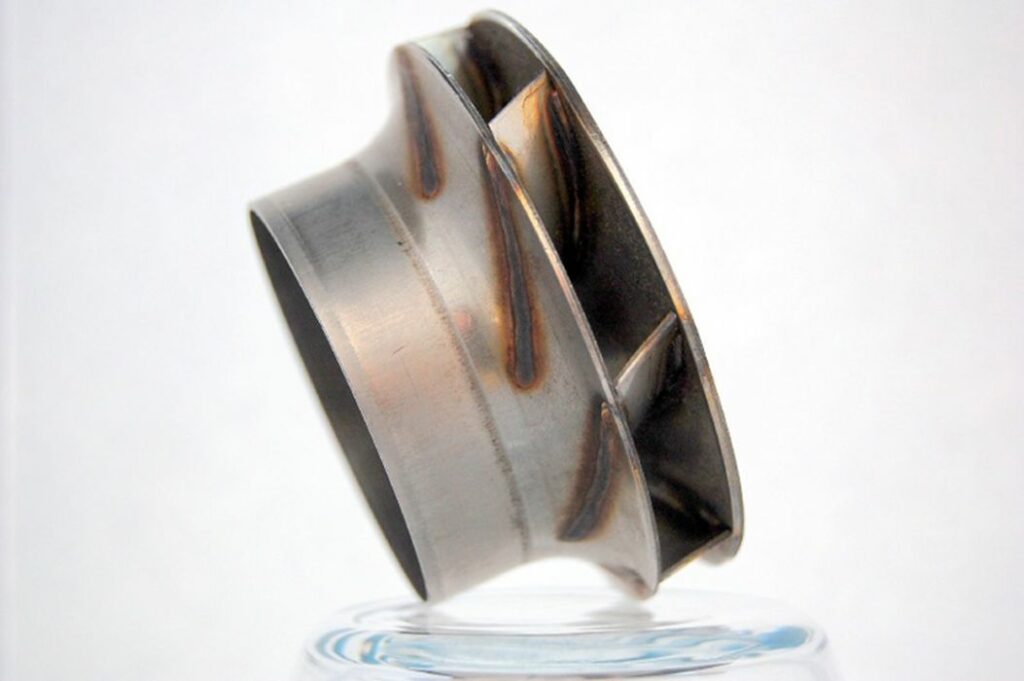
Charles R. Goulding and Valentina Alzate look at several companies using 3D printing to help solve the growing water crisis.
The Problem
In 49 years the U.S. might not be able to handle national water demands. Currently, many areas of the U.S. are struggling with low availability of water and severe droughts. In California, two of the largest water reservoirs, Shasta Lake and Lake Orville, have been reduced to alarmingly low levels. The reservoirs reached 40% and 50% of their total capacity, respectively. In August of 2021, the federal government declared that the Colorado River was experiencing an unprecedented water shortage.
This sent the states of Nevada and Arizona, as well as the country of Mexico, into mandated water reductions. As a point of reference, the Colorado River is home to most of the water supply of Southern Nevada. These water shortages are heightened by changing climate conditions, inefficient water infrastructure and a growing population that overcomes the current water supply.
The expected population of the U.S. is expected to grow by 79 million within the next 40 years. This population growth will present a great challenge to an already strained water system. The effect of climate change is exacerbating the number of droughts that impact the U.S., and scientists have warned that these effects could cut the amount of water basins that can meet demands by half. American water systems are decaying, and millions of dollars in treated water have been lost because of leaking pipes.
These problems are not only central to the U.S., water scarcity is an issue for around 3 billion people yearly. According to scientists, millions of people around the world could be displaced as an effect of water scarcity by 2030.
Innovative Solutions: Xylem

Xylem is a Fortune 1000, American water technology company that is striving to change the future of water with technological innovation. Xylem is a major player in sustainability and has worked on developing new techniques for water filtration and disinfection which help to fight water scarcity by allowing new methods for recycling drinking water.
Xylem is also working on addressing the issue of pipe leaking and water delivery by developing smart virtual water meters which can address pipe leaks efficiently and provide consumers water usage statistics. The company uses automated software that detects the exact locations of water leaks.
Xylem is also a producer of advanced wastewater smart pumping systems. These systems aid in wastewater management because they can provide operators feedback on the pumping mechanism, including environmental conditions which could affect the system.
The Flygt pumps used in these wastewater management systems can lead to around 70% in energy savings and reduced costs. Efficient and effective wastewater management can be a key step in developing a comprehensive plan to combat water shortages. Well-managed wastewater treatments can open renewable sources of water for communities that are struggling with droughts and low supply.
The filtering of wastewater lifted through efficient pump systems can then be filtered and recycled downstream to serve as drinking water for some communities. Furthermore, recycled wastewater can be used for irrigation in farming communities that are being deeply affected by the lack of available freshwater.
Xylem is a key producer of impeller cores. These cores are needed for efficient and sustainable wastewater pumps. These pumps can be used to filter wastewater to larger sewer systems quickly and efficiently to facilitate wastewater management.
Xylem uses 3D printing to facilitate the manufacturing of impeller cores. With a 3D printer they were able to print a full impeller core within 48 hours, which is 5 days faster than manual production. The reason for this is that instead of having to break the building process into several parts, they are now able to develop the part completely as one part using a 3D printer. The faster production of impeller cores, thanks to the addition of 3D printers, allows for the expansion of efficient wastewater management systems.
Innovative Solutions: GE
General Electric has created a group dedicated to water technologies called GE Water & Process Technologies. They have worked on opening multiple desalination plants that have opened new water sources for people facing water shortages all over the world. Desalination is the process of removing salt and toxins from water to create drinkable water.
This is an important innovation if one considers that 97.5 percent of the earth’s water is saltwater. The Hamma Water Desalination plant, constructed by GE and the Algerian Energy Company, uses reverse osmosis to desalinate 53 million gallons of saltwater a day. This amount of water has been able to reach millions of Algiers who previously faced severe water shortages due to droughts.
GE has also adopted 3D printing as a facilitator in its water conservation and innovation efforts. Researchers of the U.S. Department of Energy worked in combination with GE to develop new desalination parts that help the desalination process. They have developed a 3D printed miniature steam turbine that aids in the freezing of saltwater for desalination. The increased efficiency of using 3D printing opens doors for greater access to desalination processes.
Innovative Solutions: BigRep and NOWLAB

3D printed BANYAN Eco Wall [Source: BigRep]
One possible solution to the water crisis could be novel methods that allow for practical water conservation. NOWLAB, an innovation consultancy of BIGREP, a leading 3D printing company based in Berlin, has designed and produced a fully 3D printed green wall called the BANYAN Eco Wall. This eco wall includes an embedded watering system which ensures that plants are appropriated nourished with the exact amount of necessary water.
This technology can have a profound impact on the water crisis, if expanded to domestic irrigation it could be easier to implement water conservation efforts within more areas given the practicality of the eco wall. Furthermore, the composition of the eco wall being fully 3D printed could allow for quicker and more efficient expansion of this technology.
The Research & Development Tax Credit
Companies developing products using 3D printing and similar iterative activities may be eligible for federal and state Research and Development (R&D) Tax Credits.
The now permanent Research and Development (R&D) Tax Credit is available for companies developing new or improved products, processes and/or software.
3D printing can help boost a company’s R&D Tax Credits. Wages for technical employees creating, testing and revising 3D printed prototypes can be included as a percentage of eligible time spent for the R&D Tax Credit. Similarly, when used as a method of improving a process, time spent integrating 3D printing hardware and software counts as an eligible activity. Lastly, when used for modeling and preproduction, the costs of filaments consumed during the development process may also be recovered.
Whether it is used for creating and testing prototypes or for final production, 3D printing is a great indicator that R&D Credit eligible activities are taking place. Companies implementing this technology at any point should consider taking advantage of R&D Tax Credits.
Conclusion
Xylem and GE are major innovators in the water conservation and sustainability field. By using advanced techniques to clean available water and then recycle drinkable water, they are working to fight the serious risk of water scarcity. Innovative 3D printed projects like the BANYAN Eco Wall could also be a step in promoting conservation efforts. The use of 3D printing by these major players suggests possibilities for greater efficiency in this field and possibly, more usage of 3D printing technology.

